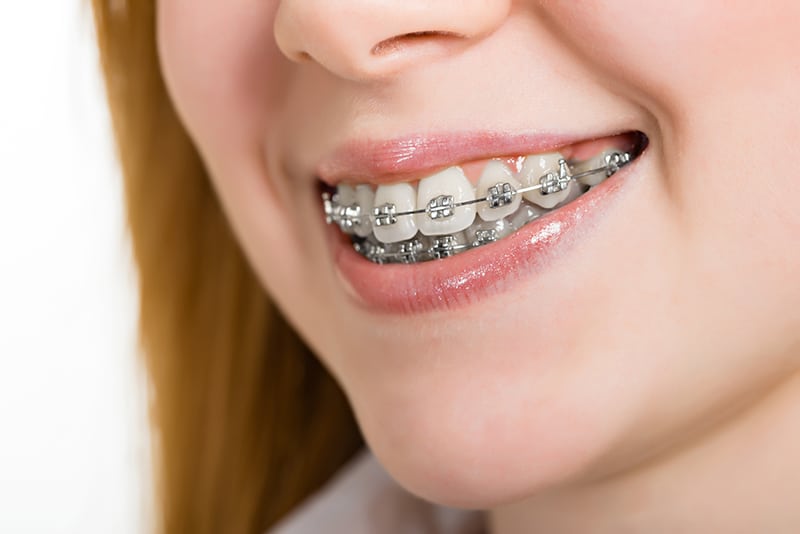Malocclusion or misalignment of the upper and lower teeth is a common dental condition. It is usually caused by a difference between jaw and tooth size or the size of the upper and lower jaws. Having malocclusion can affect vital oral functions like chewing, biting, and speaking and may even cause cavities, gum disease, temporomandibular joint dysfunction (TMJ), sleep disorders, and cosmetic concerns. Dentists typically diagnose malocclusion of teeth through routine dental exams and refer the patient to an orthodontist for treatment. Billing orthodontics using the right ICD-10 and CDT codes is easier with dental billing services.
Causes and Symptoms
Malocclusion can occur due to several reasons:
- If the teeth are too large for the jaw, the teeth will crowd together and cause misalignment between the upper and lower jaw.
- Thumb sucking in childhood
- Early tooth loss, causing the remaining teeth to shift to fill the gap
- Teeth grinding (bruxism)
- Cleft lip and palate
- Injuries and trauma
- Tumors in the mouth or jaw
- Poor oral care
- Genetic factors
While some malocclusions have no symptoms, others may have subtle or severe symptoms. Typical symptoms of malocclusion include:
- Improper alignment of teeth
- Changes in facial appearance
- Discomfort when chewing or biting
- Frequent biting of the inner cheeks or tongue
- Difficulty or discomfort when biting or chewing
- Speech problems, including lisping
- Breathing through the mouth rather than the nose
There are different types of malocclusion that are diagnosed based on symptoms, dental exams, and X-rays.
Malocclusion Diagnosis and Classification
Dental exams and X-rays can identify problems with bite and teeth misalignment. Malocclusion is classified into three types based on type and severity.
- Class 1 malocclusion is the most common type. It is diagnosed when there an overlap of upper teeth over the lower teeth. This type of malocclusion does not affect the bite much and teeth misalignment is not severe. Class 1 malocclusion is further classified into three:
- Type 1, where the teeth lean towards the tongue
- Type 2 in which the lower teeth are angled towards the tongue, and upper teeth stick out in narrow arches, and
- Type 3 characterized by overcrowding of the upper front teeth that angle towards the tongue.
Class 1 malocclusion requires only minor treatment.
- Class 2 malocclusion is a severe overbite which is called retrognathism. In Type 2 malocclusion, the upper teeth stick out over the lower teeth, affecting overall bite alignment (overbite). Class II malocclusions fall under two divisions:
- Division 1: the upper teeth lean toward the lips
- Division 2: the upper central incisors lean toward the tongue
Class 2 malocclusions are often severe, need orthodontic intervention, and may take time to correct. With the right appliances and approach, orthodontists can restore the bite to a more natural state.
- Class 3 malocclusion is considered a complicated maxillofacial disorder. It is diagnosed when the lower teeth overlap with the upper teeth and there is a severe underbite. It is caused by a large upper jaw that juts forward and can also include a crossbite, where the top teeth and bottom teeth do not bite in the correct position. There may be a series of overlapping upper and lower teeth.
Patients with this type of malocclusion have a prominent chin and a profile with a concave appearance. Class III malocclusion is usually the result of excessive growth in the lower jaw, absence of upper jaw growth, or a combination of both.
Treatment for malocclusions will include braces or aligners, but may also require tooth removal, retainers or oral splints. When Class 3 malocclusion is skeletal, treatment will include orthodontics combined with orthognathic surgery.
ICD-10 Codes for Malocclusions
The ICD-10 codes in the M26 (Anomalies of dental relationship) category cover all the forms of “malocclusion” and are assigned by orthodontists for all patients. The ICD-10 codes for malocclusions found under M00-M99 – Diseases of the musculoskeletal system and connective tissue:
M26-M27 – Dentofacial anomalies [including malocclusion] and other disorders of jaw
M26.0 Major anomalies of jaw size
M26.1 Anomalies of jaw-cranial base relationship
M26.2 Anomalies of dental arch relationship
M26.20 Unspecified anomaly of dental arch relationship
M26.21 Malocclusion, Angle’s class
M26.211 Malocclusion, Angle’s class II
M26.212 Malocclusion, Angle’s class III
M26.213 Malocclusion, Angle’s class, unspecified
M26.219 Malocclusion, Angle’s class, unspecified
M26.220 Open anterior occlusal relationship (posterior openbite)
M26.221 Open posterior occlusal relationship
M26.22 Open occlusal relationship
M26.23 – Excessive horizontal overlap
M26.24 – Reverse articulation
M26.25 – Anomalies of interarch distance
M26.29 – Other anomalies of dental arch relationship
M26.3Anomalies of tooth position of fully erupted tooth or teeth
M26.30 unspecified anomaly of tooth position of fully erupted
M26.31 crowding of fully erupted teeth
M26.32 excessive spacing of fully erupted teeth
M26.33 horizontal displacement of fully erupted tooth or teeth
M26.34 vertical displacement of fully erupted tooth or teeth
M26.35 rotation of fully erupted tooth or teeth
M26.36 insufficient interocclusal distance of fully erupted
M26.37 excessive interocclusal distance of fully erupted
M26.39 other anomalies of tooth position of fully erupted
M26.4 malocclusion: unspecified
M27 Other diseases of the jaw
Points to Note When Using Malocclusion Diagnostic Codes
- The code assigned should clearly specify the patient’s situation.
- Codes M26.20 (Unspecified anomaly of dental arch relationship) or M26.4 (Malocclusion, unspecified) should be used only if: 1) none of the other codes are appropriate or 2) due to the circumstances, the more specific category cannot be determined.
- When coding, all codes relevant to the accompanying procedure should be listed and the most “significant” code(s) should be listed first.
Working with an experienced dental billing company can ensure accurate coding and claim submission. Experts will assign the appropriate diagnosis code based on patient records for accurate billing. They will also use the associated codes for other diagnoses that may apply in given clinical scenarios. Dental billing specialists stay up to date with all insurance industry changes and ICD-10 and CDT code changes, and follow best billing practices to streamline dental practice insurance billing, submit clean claims, and boost cash flow.




